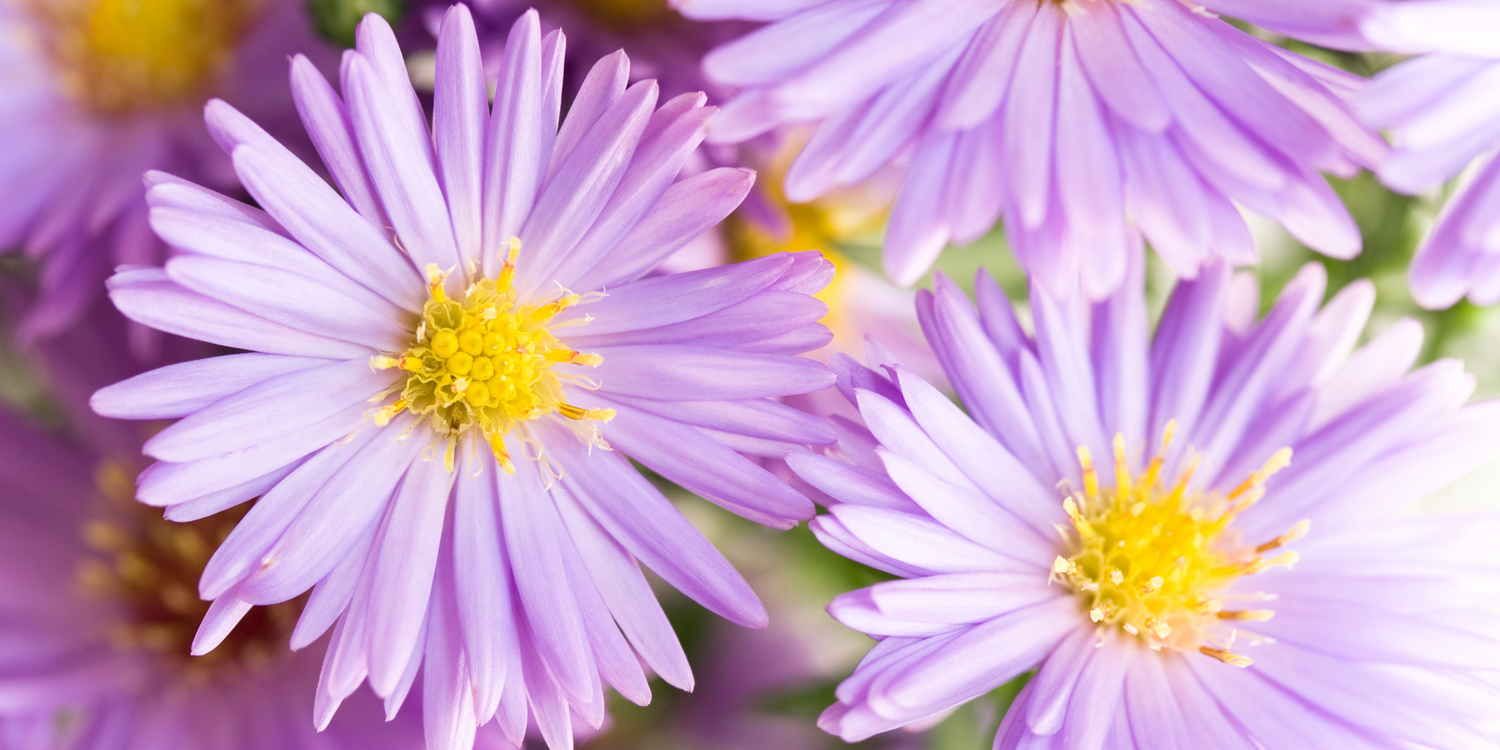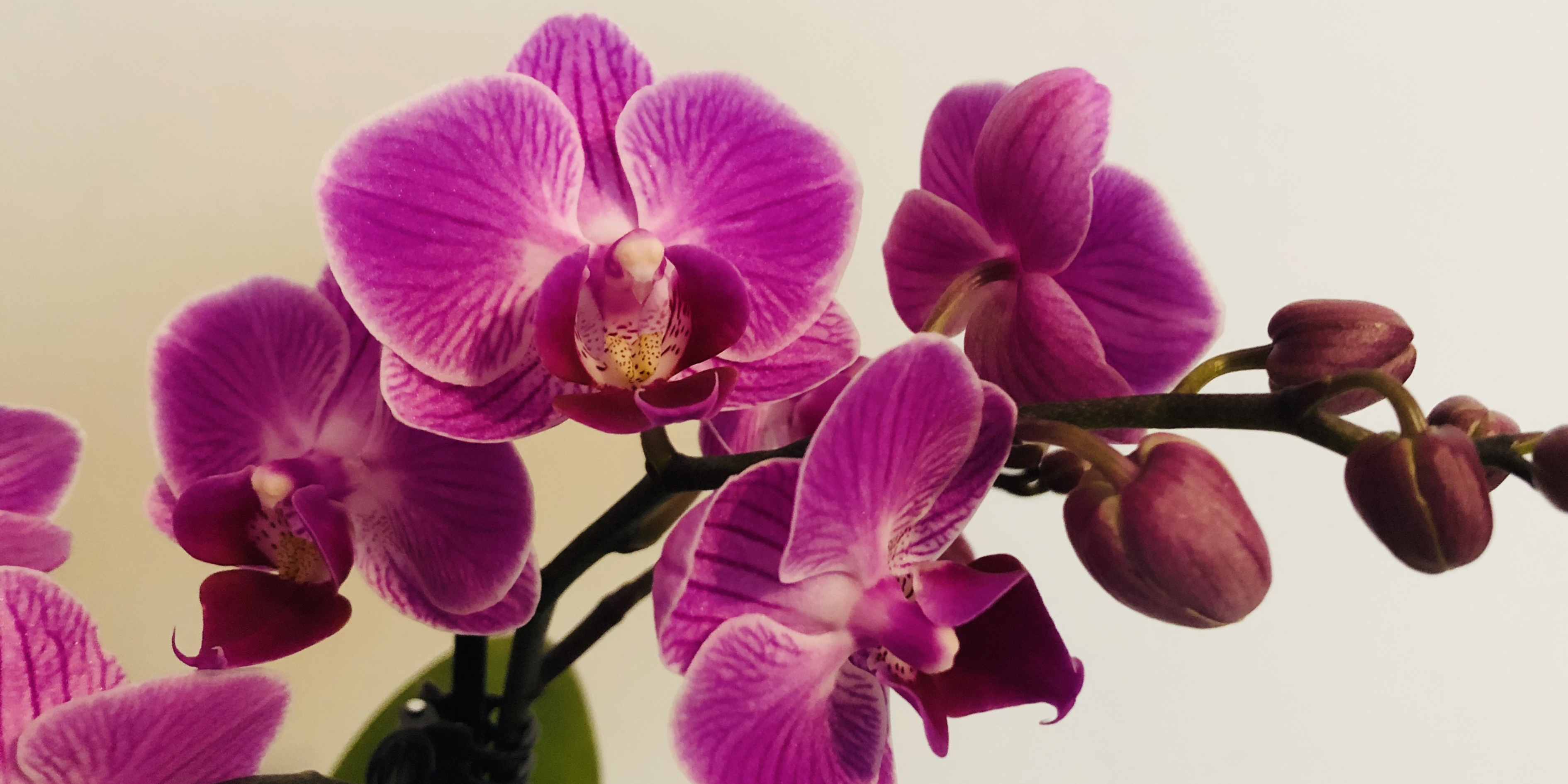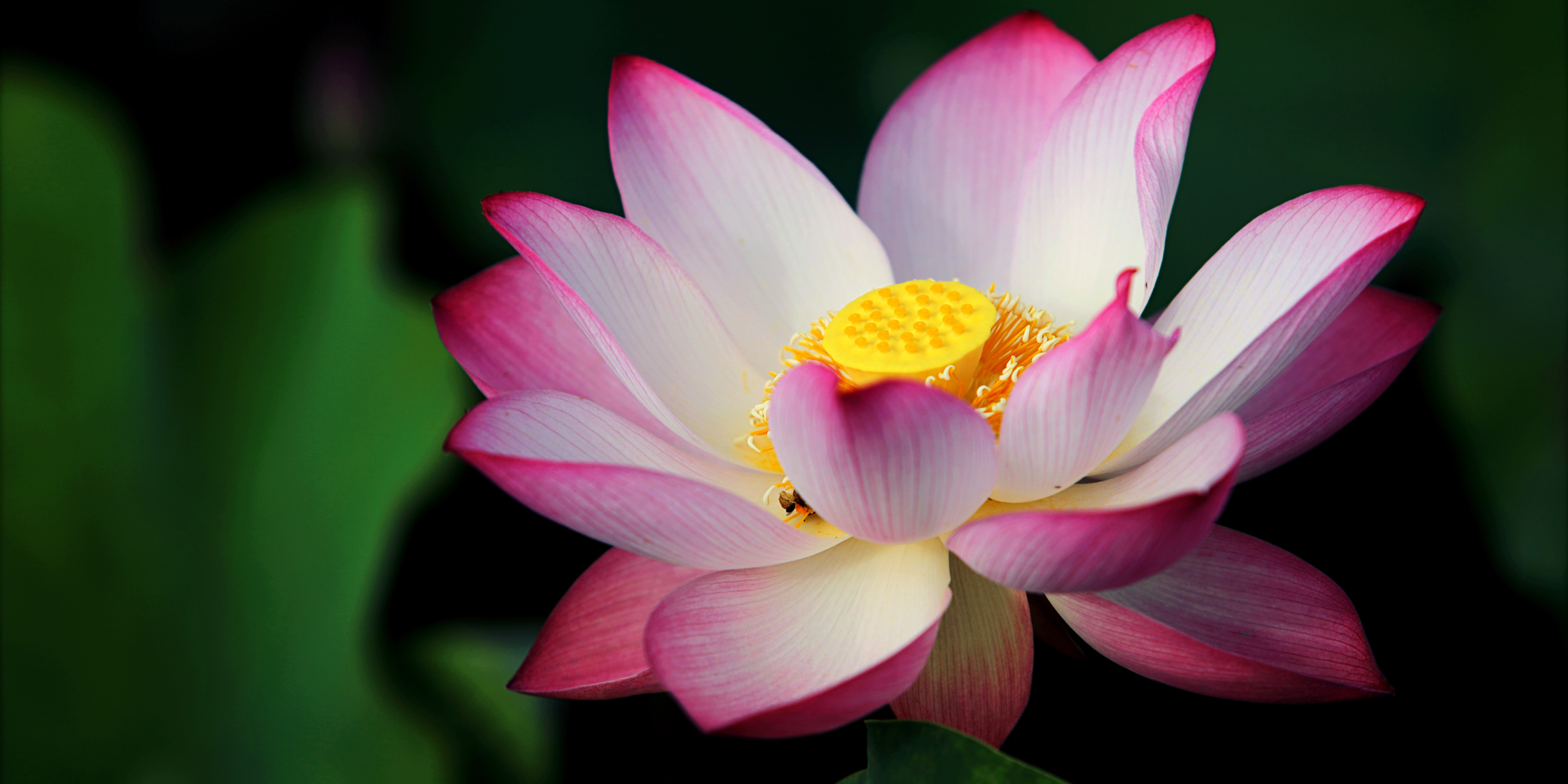The humble aster is a misunderstood flower. They're often confused with daisies, and some even consider them to be weedy because of how easily they grow.
Personally, we love asters at Floraly. They're happy, sunny blooms that add fun bursts of colour to any bouquet they're featured in. An aster posy will bring a touch of country charm and springtime cheer to your home, or the home of whomever you give it to.
But there's more to them than just their winning personality and happy hues. There's also a lot of history and meaning in the aster flower.
Read on to learn more about asters, and perhaps you'll come to appreciate them as much as we have!
Aster Flower Meaning

The aster flower has a wide range of symbolic meanings, including patience, faith, love, valour and wisdom. Asters come in shades of purple, pink, white and blue, and the exact meaning of the flower can also vary depending on which colour you're looking at.
Purple Aster Flower Meaning
Purple asters symbolise royalty, dignity and admiration. They make an excellent gift for someone you admire and respect greatly.
Pink Aster Flower Meaning
Pink asters represent innocence, love and affection. They make a lovely gift for someone you care deeply about.
White Aster Flower Meaning
White aster flowers are associated with innocence and purity. They make a beautiful addition to any wedding or baby shower bouquet.
Blue Aster Flower Meaning
Blue aster flowers represent trustworthiness and faithfulness. This makes them the perfect gift for a cherished friend or a loved one you trust implicitly. Technically, they're not "true" blue flowers. Rather, they're a shade of purple-blue.
Aster Flower History & Insights
The aster flower has a long and rich history, dating back to ancient Greece. The name aster actually comes from the Greek word "asteri" meaning "star," which is fitting given the aster's star-like shape.
In different regions and different periods of time, asters have also been called "starworts", "Easter daisies" and "Michaelmas daisies" (which we'll talk more about a bit later on).
Asters were originally native to parts of Europe and Asia, but today they can be found all over the world. This is partly because asters thrive in lots of different conditions, including ones other flowers find intolerable. It's their ability to grow so easily that has led them to develop a bit of a weedy reputation.
But long before they were considered weeds, they were considered sacred.
Asters in Ancient Greece & Rome
According to Ancient Greek myth, the aster flower was created by the goddess Astraea. There are a few different versions of the story, but the most well-known is that Astraea was so upset by the lack of stars in the sky that she began to weep, with asters sprouting from where her tears fell upon the ground.
Another legend tells that when Theseus defeated the Minotaur, he was supposed to sail home under a white flag. Unfortunately, he sailed home under a black flag instead, which signalled to his father, King Aegeus, that he had died. When King Aegeus saw the black flag, he took his own life in despair. As he did so, aster flowers sprang up from where his blood stained the earth.
The Ancient Greeks believed that asters had the power to ward off evil spirits, and would burn them as a way to repel serpents from their homes.
They would also weave asters into wreaths and place them on altars to honour Hecate, the goddess of magic and witchcraft.
In Ancient Rome, meanwhile, asters were associated with Venus, the goddess of love. The Romans also used asters to decorate altars.
Asters in Christianity
Michaelmas is a Christian holiday celebrated on September 29th, dedicated to the archangel Michael. In England, Scotland and parts of western Europe, asters are also known as Michaelmas daisies, because the flowers bloom around the same time of year and are thus associated with the holiday.
Asters in Victorian England
Asters were very popular in Victorian England. During this period, people used floriography, or the language of flowers, to say things that social conventions meant they couldn't say aloud.
Asters were very good at conveying different emotions and messages. The aster was seen as a symbol of love, patience and wisdom, making it the perfect gift for a loved one. Asters also represented elegance and grace, two qualities that were highly valued in Victorian England.
Asters in Europe
The Hungarian Revolution of 1918 is also known as the Aster Revolution. The protestors wore asters in their hats and caps as symbols of their support for the country's independence.
In France, asters were traditionally laid on the graves of fallen soldiers as a symbol of afterthought, and a wish that things had turned out differently.
When to Give Someone Asters
Remember the myth of the Greek goddess Astraea? Another part of her story is that when humans began to descend into wickedness, she fled from the earth and joined the heavens as the constellation, Virgo.
Virgo is the 6th sign of the Zodiac, and covers the dates August 23—September 22. With Astraea's association with asters and the Virgo star sign, it's fitting that asters are the September birth flower!
For this reason, a bouquet of asters makes a lovely gift for anyone celebrating a September birthday.
Asters are also the traditional flower gift for a 20th wedding anniversary. If you and your partner, or someone else you know, are celebrating this incredible milestone, you can't go wrong with a gift of beautiful asters.
The Difference Between Asters & Daisies

Asters and daisies both belong to the family Asteraceae, the same family as sunflowers, gerberas, dandelions and chrysanthemums.
A lot of flowers in the Asteraceae family have a similar sort of look and structure. What we may perceive as being a single flower is actually a cluster of many, many smaller flowers called "florets". There are two types of florets: "ray florets" (the outer petals) and "disk florets" (at the centre of the flower head).
Asters and daisies are particularly difficult to tell apart. They even come in similar colours! The best way to tell an aster apart from a daisy is by its disk florets: the daisy's central disk tends to be larger than in asters.
The Difference Between Asters & China Asters

The Aster genus used to contain over 600 different species of asters, but many of these have since been reclassified. Among these were China asters, which are now classified under the new genus, Callistephus.
China asters are native to Korea and China, but can be found worldwide like true asters. China asters are larger and fuller than true asters, and can sometimes be quite pom-pom like. They sometimes appear more similar to chrysanthemums than asters (unsurprising, since they're in the same family, after all).
China asters also come in a greater array of colours than true asters, including light pink, dark pink, mauve, indigo, purple, red, yellow and orange.
If you're interested in knowing the meaning of China asters, here's a quick summary:
- Pink—Pink China asters symbolise elegance and grace
- Purple—Purple China asters symbolise royalty and wealth
- Red—Red China asters symbolise eternal love and devotion
- Yellow—Yellow China asters represent happiness and good fortune
- Blue—Blue China asters are said to bring good luck
- Orange—Orange China asters signify energy and enthusiasm.
What Flowers Work with Asters in a Bouquet?
Small and dainty asters work best as filler flowers in bouquets. They add a touch of delicacy and romance, not to mention lovely colour, and can really help to bring the arrangement together.
Asters work well with other flowers that have a similar sort of delicate feel, such as baby's breath, Queen Anne's lace and lavender. These sorts of flowers convey a similar message of love, elegance and grace.
If you're looking for a more striking aster bouquet, try pairing them with bolder blooms like sunflowers, chrysanthemums, gerberas, hyacinths or roses. The contrast between the strong colours and shapes of these flowers will really make the bouquet pop!
With their bright and happy colours and starburst shape, asters can also make a lovely posy or bouquet all on their own.
How to Care for Cut Aster Flowers
Once cut, asters are relatively easy to take care of. They don't need a lot of fussing, and as long as you give them the proper care, they should last about 10 days in your vase.
Here are a few tips for keeping your bouquet of aster flowers looking their best:
- Cut the stems at an angle before putting them in water. This increases the surface area for water absorption
- Strip away any leaves below the waterline. Flower food can actually damage the foliage of asters, which can cause the flowers to wilt quicker
- Make sure to keep the vase water fresh, and change it regularly. If the water appears murky or cloudy, this indicates the presence of bacteria. Give the vase a wash and replace the water to help prolong the life of your asters
- Snip off any wilted or dead blooms to keep the remaining stems fresh.
How to grow your own asters at home

Asters make a great addition to any garden, filling your yard with lovely colour in summer and autumn. Asters are herbaceous perennials, which means they die back to the ground each winter and regrow in spring.
If you're interested in growing your own aster flowers at home, you'll be pleased to know that they're not too difficult to take care of. Here are a few tips for growing aster flowers in your garden:
- Asters need full sun to partial shade. They don't appreciate harsh midday sun, so take care not to plant them in areas where they might get scorched in the high heat of an Australian summer
- They're not too fussy about soil type (which helps them grow easily in lots of zones), but they do prefer a well-draining soil with a neutral to slightly acidic pH level
- Asters are relatively drought tolerant but appreciate regular watering; keep the soil moist, but take care not to overwater
- When watering, take care not to wet the leaves of your aster plant, as this can encourage the growth of powdery mildew
- Fertilise your aster plants in spring with a slow-release fertiliser. This will help them to produce lots of beautiful blooms come autumn
- To encourage bushier growth, you can de-head the stems to produce more flowers.
Are Asters Toxic to Pets?
Some of the prettiest and most popular flowers are toxic to our furry friends—lilies, chrysanthemums, gladioli, and more.
Fortunately, asters are non-toxic to cats, dogs and horses! This makes them a great pet-friendly bloom to have at home.
Can you Eat Asters?
Many plants in the Asteraceae family are edible, and this includes asters. The flowers, leaves and stems of the aster plant can all be eaten raw or cooked, like spinach. Asters are said to have a slightly bitter taste, but are still reasonably palatable.
Aster flowers can be brewed to make tea, used to decorate cakes and desserts or added to salads and other dishes as a garnish.
Aster roots have also been used for their medicinal properties. In traditional Chinese medicine, aster root is primarily used to relieve phlegmy coughs.
Asters & Allergies
While Asteraceae flowers are some of the most beautiful to behold, they're also among the worst flowers for allergy and asthma sufferers.
Asters are one of the main culprits of summertime allergies and may trigger symptoms of hay fever, asthma and even eczema. This is despite the fact that asters aren't wind-pollinated. The pollen is incredibly potent, so if you suffer from allergies it's best to avoid asters altogether, if you can.
***
If you enjoyed this article, check out other articles in our Flower Insights series about the lotus flower and the gladiolus.



